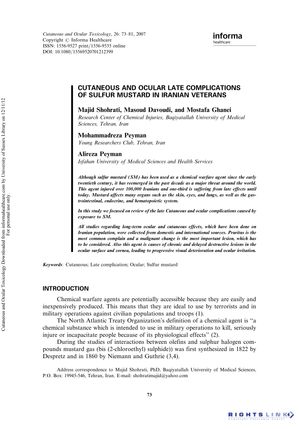Cutaneous and Ocular Late Complications of Sulfur Mustard in Iranian Veterans
January 2007
in “Cutaneous and Ocular Toxicology”

TLDR Iranian veterans exposed to sulfur mustard suffer from long-term skin itching and eye damage, with some risk of skin cancer and ongoing management challenges.
The document reviewed the long-term cutaneous and ocular complications in Iranian veterans exposed to sulfur mustard (SM), with over 100,000 Iranians injured and one-third suffering from late effects. Pruritus was the most common skin complaint, and although SM has carcinogenic potential, there was no strong evidence of a high risk of skin cancer from short-term exposure. Ocular complications included chronic and delayed lesions on the cornea and ocular surface, leading to progressive visual deterioration and irritation. A study of 48 veterans showed that 50% experienced blurred vision, 42.5% itching, and 37.5% a burning sensation, with various ocular conditions observed upon examination. Treatment for these complications is symptomatic, with systemic antihistamines and emollients for skin, and rare need for corneal transplantation for eyes. The study concluded that SM exposure results in severe complications, with pruritus being the most common issue and a potential for malignant changes, but the pathophysiology and management of SM poisoning are not fully understood.
View this study on tandfonline.com →